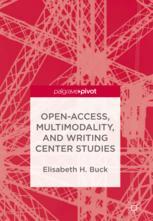

Most ebook files are in PDF format, so you can easily read them using various software such as Foxit Reader or directly on the Google Chrome browser.
Some ebook files are released by publishers in other formats such as .awz, .mobi, .epub, .fb2, etc. You may need to install specific software to read these formats on mobile/PC, such as Calibre.
Please read the tutorial at this link: https://ebookbell.com/faq
We offer FREE conversion to the popular formats you request; however, this may take some time. Therefore, right after payment, please email us, and we will try to provide the service as quickly as possible.
For some exceptional file formats or broken links (if any), please refrain from opening any disputes. Instead, email us first, and we will try to assist within a maximum of 6 hours.
EbookBell Team

4.4
22 reviewsThe disciplinary triad of open-access, multimodality, and writing center studies presents a timely, critical lens for discussing academic publishing in a moment of crucibilic change, where rapid technological advancements force scholars and institutions to question what is produced and “counts” as academic writing.
Using historiographic, quantitative, and qualitative analysis, Open-Access, Multimodality, and Writing Center Studies sees writing center scholarship as a microcosm of many of the larger issues at play in the contemporary academic publishing landscape. This case study approach reveals the complex, imbricated ways that questions about publishing manifest both within the content of journals, and as related to academics’ perceptions as signifiers of disciplinary visibility, identity, and transformation.
More than just reaffirming the conventional wisdom about these changes in publishing—that these shifts are happening and we do not always know how to pinpoint them—Open-Access, Multimodality, and Writing Center Studies suggests that scholars in all fields, compositionists, and writing center practitioners be conscious of the ways they are complicit in maintaining barriers to accessibility and innovation.
Chapter 5 of this book is available open access under a CC BY 4.0 license at link.springer.com.